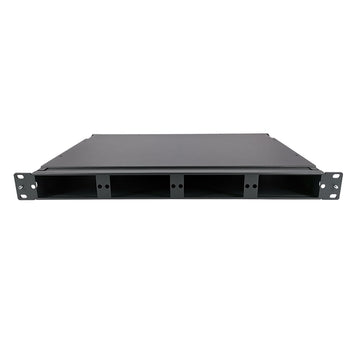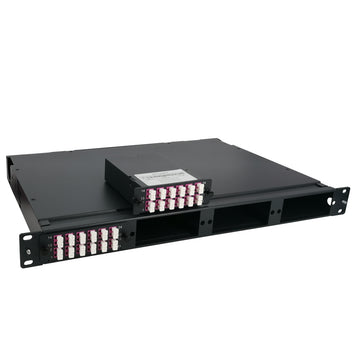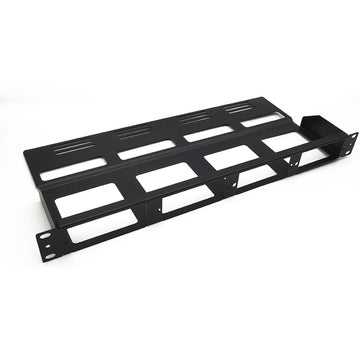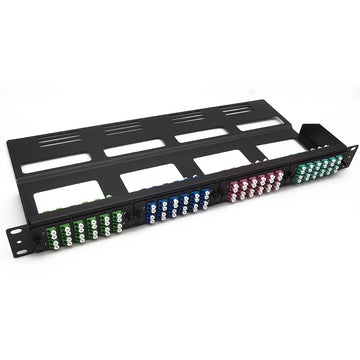Fiber to the Desk (FTTD): Advantage, Deploy and Solution
In recent years, projects like FTTH (Fiber to the Home) and FTTB (Fiber to the Building) are carried out to provide better services for customers. To future capitalize on the benefits of optical cable, Fiber to the Desk (FTTD) is recommended for enterprises, financial institutions and federal agencies, which need high security and high data transmission speed. This article will guide you to have a closer look at FTTD.
What is FTTD?
FTTD(Fiber to the Desk) refers to the extension of the fiber optic infrastructure directly to user locations, is an optical fiber that extends the fiber to the user's terminal computer in place of the traditional Category 5 copper cable to enable the user's terminal to access the entire fiber network. In today’s networks, fiber optic cabling is frequently used as the backbone of communications network cabling, from the entrance into a building to various telephone/data equipment closets serving users on different floors of the building. But now, more and more organizations are capitalizing on the benefits of fiber optic cable to connect directly to desktops, laptops, or other communications equipment.
Advantages of FTTD
Here are some of the many advantages to using fiber optic cable to connect to the main fiber network directly at the desktop:
Security
Fiber optic cable is immune to electromagnetic interference (EMI) and radio-frequency interference (RFI), and is therefore more challenging for hackers to tap. Because copper cables emit electromagnetic signals, hackers can read data from nearby without physically touching the lines. Machinery, fluorescent lights, and radio signaling equipment used for communications, including wireless communications, can also create EMI and RFI. In contrast, fiber optic cable uses light that is completely shielded so hackers would have to physically splice into the line, which is difficult to do and easily detected. For organizations concerned with data security, fiber optic cable is the most secure option.
Bandwidth And Distance
As demand for higher bandwidth is ever-growing, optical cable has the absolute advantage. What’s more, connected with appropriate optics, the transmission distance of optical cable can reach dozen kilometers. Although higher grades of RJ45 Ethernet cables can transmit 10G data signals, they will only be able to do so over very short distances. Therefore, optical cable is the best choice for transporting higher speed and higher bandwidth signals over longer distances.
Lower Overall Cost
Optical cable used to be more expensive than RJ45 Ethernet cable. As demand has increased, manufacturing costs have dropped. Also, if properly designed, the FTTD project could be affordable. Apart from this, optical cable can ensure your network cabling can keep up with the growth in network traffic over time and upgrade your network to higher bandwidth in the future without recabling. Considering the cost of cabling, this can be a huge advantage. Though the initial cost of fiber equipment may be slightly higher than copper, the benefits realized can save organizations significant cost in the long term.
Future Proof
With fiber cabling offering the best security, bandwidth, distance, and lower overall cost, it also offers the longest useful life because of its ability to handle the resulting changes in technology.
| Fiber | Copper | |
| Bandwidth | 10-Gigabit and beyond | Gigabit |
| Future-proof | Evolving towards the desktop | CAT7 under development |
| Distance | 40km+@10.000Mbps | 100m@1000Mbps |
| Noise | Immune | Susceptible to EMVRFI interference crosstalk, and voltage surges |
| Security | Almost impossible to tap | Susceptible to tapping |
| Handling | Lightweight, thin diameter Strong pulling strength |
Heavy, thicker diameter Strict pulling specifications |
When is it Deployed?
Deploying FTTD in a premise application is usually a solution for one or more of the following:
- Security– Because optical fiber is immune to electromagnetic interference (EMI) and radio-frequency interference (RFI), it is more difficult to tap. And when someone does try to tap into a fiber optic link via a splice, it is easily detected. That’s why we find a lot of FTTD deployments within government facilities where security is critical.
- Enhanced Bandwidth– While not typical, there are some specialty applications that require more bandwidth than what is possible with copper cabling (think high-end 3D animation or operations that need to move large sums of data at high transmission rates like analytics).
- Extended Distance– This one is a little tricky since the standards specify horizontal permanent links at a maximum distance of 90 meters, regardless of the media type. But let’s face it – we all know that fiber is often used to connect to devices that must reside further than 90 meters from the telecommunications room.
FTTD Solution
On February 8, 2013, Huawei released the industry's Fiber to the Door (FTTD) solution, through line technology innovation and engineering.
Implementing technological innovation and operation and maintenance deployment technology innovation, realizing the use of existing home twisted pair, coaxial cable and other media, providing ultra-high bandwidth access of 100 Mbps to Gigabit, solving operators' inability to enter the FTTH/FTTB construction The problems of slow deployment, large investment, etc., meet the needs of operators to provide broadband access efficiently.
According to Huawei, the program has taken advantage of the advantages of FTTH and FTTB to solve the challenges of ultra-high bandwidth and efficient home access for FTTH and FTTB. FTTD fiber-to-the-door solution FTTD deploys fiber access equipment to the nearest outdoor location, such as front door and weak electric well, using existing telephone twisted pair, wired coaxial cable, Ethernet line power line and other media. Achieve home access, solve the problem of fiber-to-the-home; and provide 100-Gigabit to Gigabit access bandwidth through advanced VDSL2/Vectoring/Giga DSL technology. In terms of engineering implementation, the FTTD solution introduces new technologies such as reverse power supply, grounding-free, and configuration-free, realizing plug-and-play and on-site “zero configuration”; adopting the same mode as FTTH in service delivery and operation and maintenance management. The FTTH OSS system can be reused without complicated device matching work.
Conclusion
FTTD is a horizontal wiring option that pushes the available bandwidth beyond 10G. It is an intriguing, underestimated and overlooked way to create a beneficial system that is expandable and performance-driven.
LightOptics (www.lightoptics.co.uk.com) focuses on the development of fiber optic network communication product lines. The optical cable and some other fiber optics used in FTTD are available in LightOptics. All the products adopt strict quality standards in the production and inspection, ensuring excellent operation performance and good product stability, and safely and reliably ensuring the long-term use of products. For more details, you can visit our site.












